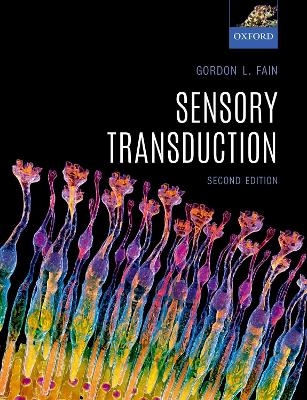
Sensory Transduction
Seiten
2019
|
2nd Revised edition
Oxford University Press (Verlag)
978-0-19-883502-8 (ISBN)
Oxford University Press (Verlag)
978-0-19-883502-8 (ISBN)
Provides a comprehensive and up-to-date review of transduction in various sensory modalities.
How are sights and sounds and smells converted into electrical signals in a form that can be interpreted by the nervous system? Although this process, called sensory transduction, began to be understood only relatively recently, so much progress has been made that it is now possible to say at least in outline (but in most cases in remarkable detail) how transduction occurs for all of the major sense organs of the body. Since the first edition was published in 2003, many new experiments have radically changed some of our previously-held views.This new edition fulfils the book's original aims, both as an accessible textbook and a general introduction to the senses, by bringing the contents fully up to date with the new information acquired over the last 15 years. In so doing, it continues to provide a comprehensive survey of one of the greatest achievements of modern biology and neuroscience - the unravelling of the mechanism of sensation.
Sensory Transduction is written for advanced undergraduates, graduate students, and researchers in neurophysiology and sensory neuroscience. It is also of relevance and use to a broader audience of neuro, evolutionary, integrative, and comparative biologists.
How are sights and sounds and smells converted into electrical signals in a form that can be interpreted by the nervous system? Although this process, called sensory transduction, began to be understood only relatively recently, so much progress has been made that it is now possible to say at least in outline (but in most cases in remarkable detail) how transduction occurs for all of the major sense organs of the body. Since the first edition was published in 2003, many new experiments have radically changed some of our previously-held views.This new edition fulfils the book's original aims, both as an accessible textbook and a general introduction to the senses, by bringing the contents fully up to date with the new information acquired over the last 15 years. In so doing, it continues to provide a comprehensive survey of one of the greatest achievements of modern biology and neuroscience - the unravelling of the mechanism of sensation.
Sensory Transduction is written for advanced undergraduates, graduate students, and researchers in neurophysiology and sensory neuroscience. It is also of relevance and use to a broader audience of neuro, evolutionary, integrative, and comparative biologists.
Gordon L. Fain received his bachelors at Stanford and his PhD in Biophysics from Johns Hopkins University. He is the author of Molecular and Cellular Physiology of Neurons (Harvard, 2014) and over 125 scientific articles on the physiology of vision. A Guggenheim Fellow and Fellow of AAAS, he is Distinguished Professor Emeritus of the Department of Ophthalmology at UCLA, where he continues to pursue an active program of research on the physiology of mammalian photoreceptors.
1: The senses
2: Mechanisms of sensation
3: Channels and electrical signals
4: Metabotropic signal transduction
5: Mechanoreceptors and touch
6: Hearing and hair cells
7: Chemoreception and the sense of smell
8: Taste
9: Photoreception
10: Extra sensory receptors
| Erscheinungsdatum | 23.10.2019 |
|---|---|
| Verlagsort | Oxford |
| Sprache | englisch |
| Maße | 193 x 252 mm |
| Gewicht | 800 g |
| Themenwelt | Naturwissenschaften ► Biologie ► Biochemie |
| Naturwissenschaften ► Biologie ► Zellbiologie | |
| Naturwissenschaften ► Biologie ► Zoologie | |
| ISBN-10 | 0-19-883502-7 / 0198835027 |
| ISBN-13 | 978-0-19-883502-8 / 9780198835028 |
| Zustand | Neuware |
| Haben Sie eine Frage zum Produkt? |
Mehr entdecken
aus dem Bereich
aus dem Bereich


